Last updated: August 16, 2018
Article
Wildland Fire in Arkansas' National Parks
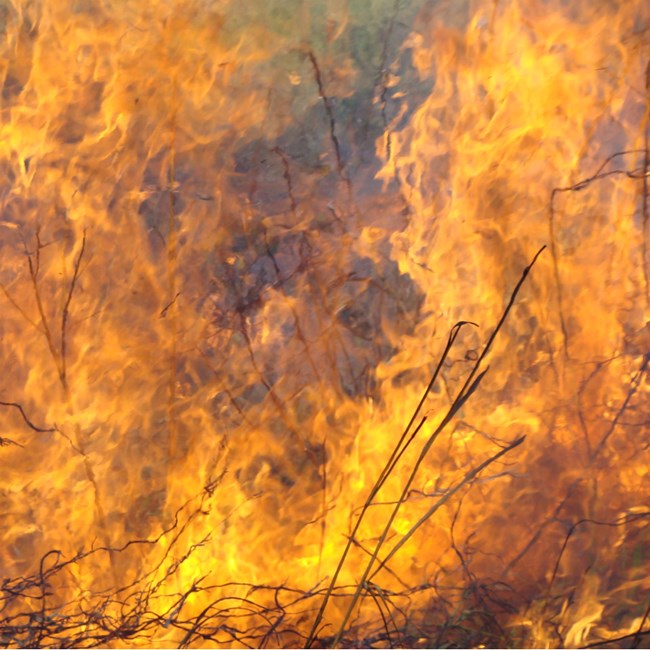
NPS photo / Anthony Collins
Fire. Humans have been fascinated with it for centuries. Fire can bring terrible destruction to forests and homes. But fire gives new life and rejuvenation to an ecosystem. Over the years people have feared the damage fire brings to the economy and life in Arkansas.
A Little Bit of History
In the early 1900s, the United States’ General Land Office was tasked with protecting the nation’s new national parks and forest reserves. Policies on forest fires revolved around putting the fire out as soon as possible. In the mid-1930s the US Forest Service adopted the “10 am policy,” which directed firefighters to have forest fires “contained and controlled by 10 am” the next day following their discovery. It wasn’t until the late 1960s that national policies changed, allowing fires to burn in fire-adapted ecosystems. Plant communities in these ecosystems not only survive periodic fire, but actually thrive and become healthier because of it.
Before settlement by Europeans, American Indians would use fire in much the same way as land managers do today. Many plants and animals found in Arkansas are dependent on periodic fires for their reproduction, growth and survival. This relationship between plants, animals, and fire occurs throughout the state in several different ecosystems. Although the relationships are similar, the behavior of fire in different regions can vary greatly. These variations can be caused by weather conditions as well as terrain and types of fuels available.
Science Tells the Story
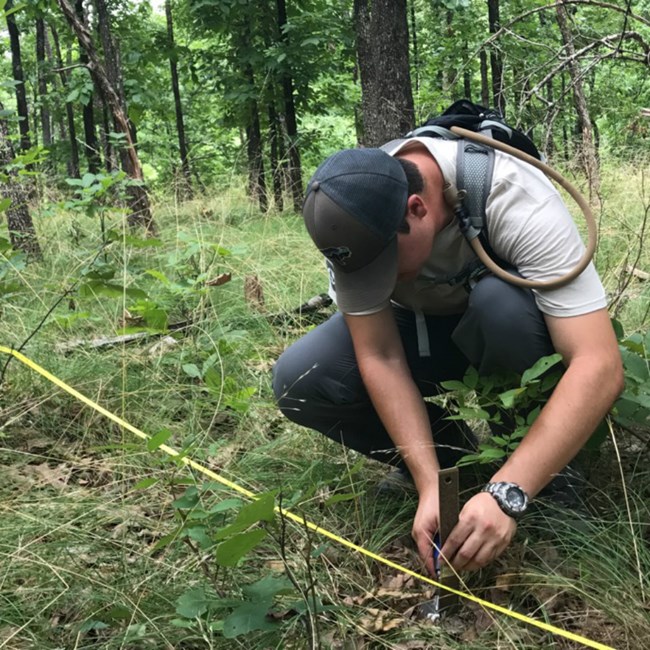
NPS photo
The National Park Service depends on information gathered by fire scientists across the country to build a deeper understanding of the role that fire plays in our environment. The scientists who take on this task of measuring and monitoring are known as fire ecologists. Measuring how much moisture is held in different types of fuels, from grass to large timber can help determine how fire would behave in those areas. Monitoring weather patterns and climate changes over larger regions allow fire ecologists and park managers to learn where and when the risks for wildfires are highest.
Today, Arkansas is home to seven national park units. The birthplace of an American president, open grasslands of historic battlefields, and reminders of past injustices that help teach Arkansas’ role in American history. These parks are home to mountain woodlands, with diverse populations of hardwoods, pines, native shrubs and wildflowers, river valleys, and wetlands. All of these places can be affected by wildland fire in one way or another. It is up to the men and women in the National Park Service to preserve and protect these places with responsible management of fire and natural resources.
Protecting the Park, Protecting the People
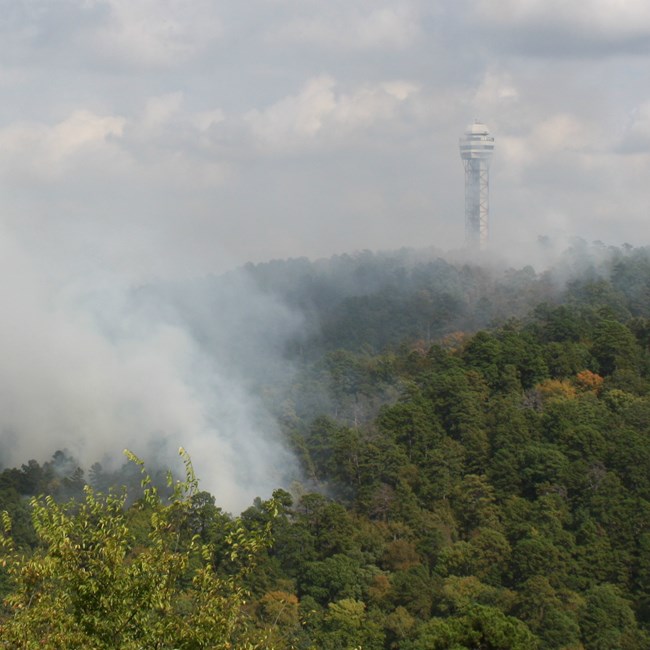
NPS Photo
In Hot Springs National Park, as with all national parks, safety is the core value. When it comes to managing wildland fire, the safety of firefighters and the public is the highest priority.
Residential neighborhoods in Hot Springs are adjacent to the park boundary. Homes and businesses would be at risk if a wildfire started within the park. Fire managers have many tools that they can utilize to help reduce the potential of a catastrophic wildfire, including mechanical treatments and prescribed fire. Both methods can be used to protect people, communities, and other resources. As prescribed fires are planned, careful consideration is given to how a fire will impact the plants, wildlife, and people involved. Weather, vegetation conditions, and other factors all must be within a specific range to meet the objectives for a prescribed fire. In situations where fire is not practical, non-fire treatments, called mechanical treatments, can take place. Using hand tools, fire staff clears underbrush or cuts trees and shrubs, mechanically thinning fuels and reducing fire risk.
The wildland-urban-interface is an area where the built environment of humans intersects with natural environments such as forests, wetlands, or grasslands. This interface is extensive in Hot Springs National Park. Other parks in Arkansas have less extensive areas of wildland-urban-interface, but deal with the same issues it creates.
Teamwork is the Key
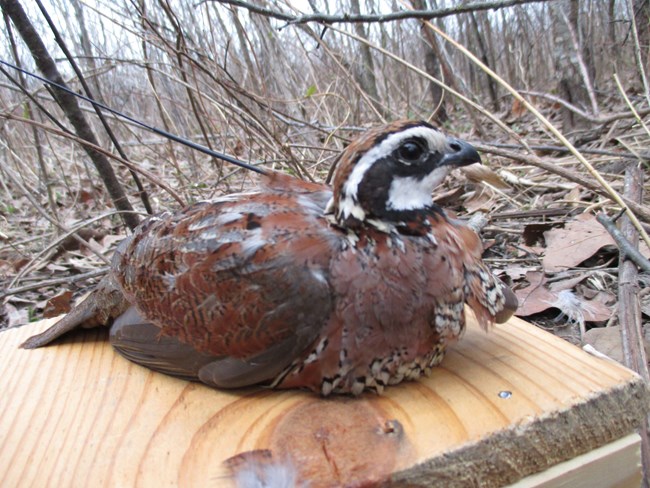
NPS Photo / Nolan Moore
In Pea Ridge National Military Park the wildland intersects not just with modern buildings and homes, but also with the cultural resources protected in these historically significant places.
Pea Ridge is on the Ozark Plateau in Northwest Arkansas. Civil War-era buildings, fences, and cannons used during the Battle of Pea Ridge are part of the landscape. Fire staff work closely with scientists to plan prescribed fires that will protect the historic battlefields as well as preserve and restore habitat for wildlife such as the bobwhite quail. Staff from the national park work with other agencies, tribes, state parks, colleges, and communities to protect lives and resources from wildfires. Pea Ridge has partnered with local volunteer fire departments to conduct prescribed fires, and in turn, fire staff from the park help to train new wildland firefighters.
Arkansas Post National Memorial also uses the assistance from local volunteer fire departments for their prescribed fire management. While wildfires are infrequent within the boundaries of the park, prescribed fires can be used in the same way that they are used in the other parks in Arkansas, for the benefit of the ecosystem and to maintain a safe wildland-urban-interface. The cooperation between the many different agencies and groups is vital to successful management of our shared resources.
A Dedicated Team
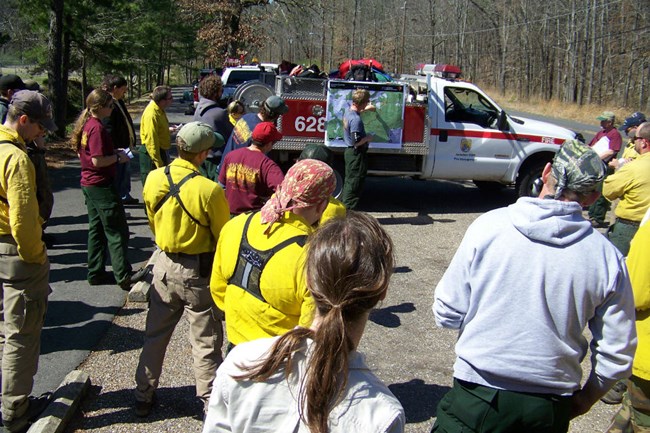
NPS Photo
Many different people come together to support Arkansas’ parks in preserving natural and cultural resources, restoring land to more natural conditions, and maintaining already healthy ecosystems. The Buffalo River Wildland Fire Module supports all of the parks in Arkansas with experienced wildland firefighters. They respond to wildfires at their home park as well as in the other Arkansas parks. The crew is composed of seasonal staff as well as permanent employees. Not only do they respond to wildfires and prescribed fires in Arkansas, but they can be called to anywhere in the country where fire danger is high.
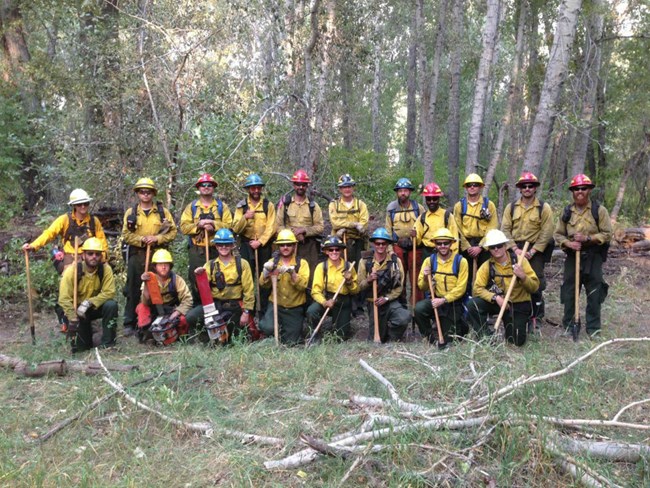
NPS Photo / Michael Simpson
All of the the parks in Arkansas, including the historical sites like Little Rock Central High School, President William Jefferson Clinton Birthplace Home, and Fort Smith can be affected by wildland fires in one way or another. These cultural parks could be impacted by smoke from wildfires burning nearby. Some employees at these historic sites maintain their qualifications to be wildland firefighters and can be called upon to help with prescribed fires in Arkansas or sent to wildfires in other states when needed.
The National Park Service employs specialists in forestry, mapping, logistics, communication, and education. They are also ready to mobilize when wildfires threaten people and resources in the national parks. Communicating fire information is critical to the safety of firefighters on the fire lines as well as fire managers and the public.
It is important to remember that fire burns where conditions are right. Fire does not acknowledge federal, state, and local boundaries or those of tribes and private landowners. It is the responsibility of this diverse and dedicated team from across agencies to prepare and take actions to reduce the community’s fire vulnerability.
Tags
- arkansas post national memorial
- buffalo national river
- fort smith national historic site
- hot springs national park
- little rock central high school national historic site
- pea ridge national military park
- president william jefferson clinton birthplace home national historic site
- fire education
- fire ecology
- midwestnps
- arkansas
